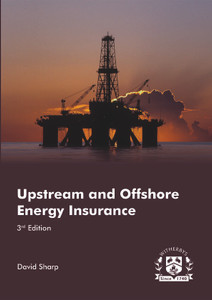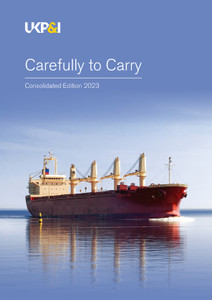
Property Insurance Claims - Law and Practice
This is a detailed guide to property insurance claims for students, insurance professionals and lawyers. In particular, it will support members of CILA in passing the Institute exams en route to becoming a Chartered or Certified Loss Adjuster.
This book provides comprehensive information on property insurance claims and how best to apply the principles of insurance. It considers the fundamental elements of the law and practice of loss adjusting in a form that promotes the study of the profession of a loss adjuster.
The book sets out the principles of insurance law, the parties involved in insurance policies/claims and important policy considerations, including insurable interest, perils, disclosure, warranties and conditions.
Matters following a loss are also covered, such as causation, underinsurance, contribution, measurement of loss, subrogation and fraud.
The text includes sample calculations as well as relevant case law and statutes.
Introduction by Malcolm Hyde
In
November
1981,
E
J
D
Peverett’s
book
entitled
Fire
Insurance
Law
&
Claims
was
published.
Mr
Peverett
was
a
claims
expert
who
worked
at
Commercial
Union
and
the
book
was
published
by
the
Chartered
Institute
of
Loss
Adjusters.
When
I
moved
from
Commercial
Union
to
Ellis
&
Buckle
in
1984,
that
book
was
my
go-to
reference
source
for
all
matters
concerning
property
insurance
claims.
Indeed,
it
was
all
loss
adjusters’
natural
choice,
so
much
so
that,
almost
thirty-seven
years
later,
I
can
still
recall
that
on
page
262
of
‘the
book’
contribution
apportionments
were
set
out
clearly
so
that
as
a
trainee
loss
adjuster
I
could
understand
and
apply
the
principles.
In
1997,
the
book
was
revised
by
R
M
Walmsley,
and
then
in
2009
I
was
asked
to
re-write
it.
I
obtained
the
appropriate
guidance
and
assistance
from
solicitors
at
DAC
Beachcroft
–
James
Deacon
and
Brendan
McCarthy.
For
me,
it
was
incredibly
important
to
have
a
legal
technical
input
into
this
reference
resource.
However,
to
use
a
phrase
from
my
favourite
musical
performers,
“Time
waits
for
no
one
and
it
won’t
wait
for
me”.
The
law
has
since
changed,
society
indeed
has
changed
and
the
way
in
which
loss
adjusters
work
has
also
changed.
This
meant
that
it
was
time
to
reconsider
the
contents,
leading
to
production
of
this
entirely
new
book,
Property
Insurance
Claims
–
Law
and
Practice.
I
am
delighted
that
Graham
Bartlett,
who
is
a
Chartered
Loss
Adjuster
and
a
Barrister,
agreed
to
provide
the
legal
technical
content.
The
purpose
of
this
book
is
to
support
members
of
the
CILA
in
passing
the
Institute
examinations
en
route
to
becoming
Chartered
or
Certified
Loss
Adjusters.
For
me
personally,
becoming
a
Chartered
Loss
Adjuster
paved
the
way
for
considerable
career
development
and
therefore
this
book
is
aimed
at
providing
the
fundamental
elements
of
the
law
and
practice
of
loss
adjusting
in
a
form
that
promotes
the
study
of
the
profession
of
a
loss
adjuster.
Loss
adjusting
is
a
fabulous
role,
varied,
testing
and
rewarding,
requiring
considerable
knowledge
and
expertise.
This
book
is
therefore
written
with
the
intention
of
motivating
the
next
generation
of
loss
adjusters
to
achieve
Chartered
status
very
much
in
mind.
Contents:
Foreword
Preface
Profile
List
of
Cases
Abbreviations
1.
Principles
of
Insurance
Law
1.1
Sources
of
English
Law
1.2
The
Rules
of
Statutory
Interpretation
Common
Law
1.3
The
Interpretation
of
Contracts
1.4
Legal
Personality
2.
The
Parties
2.1
The
Policyholder
2.3
Insurance
Companies
and
Regulatory
Bodies
2.4
Lloyd’s
of
London
2.5
Co-insurers
2.5
Reinsurers
2.6
Insurance
Brokers/Intermediaries
2.7
Underwriting
Agencies
2.8
The
Financial
Conduct
Authority
(FCA)
2.9
Financial
Ombudsman
Service
(FOS)
2.10
Loss
Adjusters
2.11
Loss
Assessors
2.12
Lawyers
2.13
Supply
Chain
2.14
Association
of
British
Insurers
(ABI)
2.15
British
Insurance
Brokers
Association
(BIBA)
2.16
AIRMIC
2.17
The
Chartered
Insurance
Institute
(CII)
2.18
The
British
Damage
Management
Association
(BDMA)
3.
Agents
and
Brokers
3.1
The
Role
of
the
Intermediary
3.2
Intermediaries
in
Non-consumer
Insurance
3.3
Intermediaries
in
Consumer
Insurance
3.4
Intermediary
Fraud
4.
Insurable
Interest
and
Indemnity
4.1
Insurable
Interest
4.2
The
Insurable
Interest
of
Co-insureds
4.3
Landlord
and
Tenant
4.4
Bailor
and
Bailee
4.5
Mortgagor
and
Mortgagee
4.6
Buyers
and
Sellers
of
Goods
4.7
Indemnity
5.
Perils
5.1
Fire
5.2
Lightning
5.3
Explosion
5.4
Riot
5.5
Malicious
Damage
5.6
Escape
of
Water
5.7
Escape
of
Fuel
Oil
5.8
Storm
5.9
Flood
5.10
Accidental
Damage
to
Underground
Services
5.11
Theft
5.12
Accidental
Damage
5.13
Subsidence,
Heave
and
Landslip
5.14
Cyber
6.
Disclosure
in
Commercial
Contracts
6.1
Utmost
Good
Faith
6.2
The
Duty
of
Fair
Presentation
Under
the
Insurance
Act
2015
6.3
Material
Circumstance
6.4
Circumstances
Material
to
the
Physical
Hazard
6.5
Circumstances
Material
to
the
Moral
Hazard
6.6
Transparency
6.7
The
Insurer’s
Remedies
for
Breach
of
Duty
of
Fair
Presentation
6.8
Loss
of
the
Right
to
Avoid
the
Policy
6.9
Financial
Ombudsman
Service
(FOS)
7.
The
Duty
of
Disclosure
in
Consumer
Contracts
7.1
Consumer’s
Duty
of
Disclosure
7.2
Section
2,
CIDRA:
Disclosure
and
Representations
before
Contract
or
Variation
7.3
Careless
Misrepresentation
7.4
The
Financial
Ombudsman
Service
(FOS)
8.
Warranties
and
Conditions
8.1
Definitions
8.2
Warranties
8.3
Conditions
9.
Underinsurance
and
Contribution
9.1
Introduction
9.2
Underinsurance
in
Practice
–
Domestic
9.3
Underinsurance
–
Commercial
9.4
Protection
Against
Underinsurance
9.5
Double
Insurance
and
Contribution
9.6
Policy
Conditions
9.7
Apportionment
in
the
Event
of
Contribution
10.
Causation
10.1
Proximate
Cause
and
the
‘But
For’
Test
10.2
Dual
or
Multiple
Causes
10.3
All
Risks
and
Accidental
Damage
Cover
10.4
Burden
of
Proof
11.
Measurement
of
the
Loss
and
Validation
11.1
Introduction
11.2
Buildings
11.3
How
to
Measure
the
Loss
–
Commercial
11.4
Basis
of
Settlement
11.5
How
to
Measure
the
Loss
–
Domestic
11.6
Reserve
for
Insurers
12.
Subrogation
12.1
Definition
12.2
Conditions
Precedent
to
Exercise
of
Rights
of
Subrogation
12.3
Subrogation
Conditions
12.4
Exclusion
of
Subrogation
12.5
Reporting
to
Insurers
12.6
The
Policyholder
12.7
Gathering
Evidence
12.8
Pursuing
the
Recovery
13.
Fraudulent
Claims
13.1
The
Duty
not
to
Make
a
Fraudulent
Claim
13.2
Definition
of
Fraud
13.3
The
Insured’s
State
of
Mind
and
the
Requirement
for
Dishonesty
13.4
The
Burden
and
Standard
of
Proof
13.5
Inducement
13.6
Retraction
13.7
The
Effect
of
Termination
under
s.12(2)
of
the
Insurance
Act
2015
13.8
Group
Insurance
13.9
Claims
Underwriting
Exchange
13.10
Chartered
Institute
of
Loss
Adjusters
Anti-Fraud
Special
Interest
Group
13.11
The
Insurance
Fraud
Bureau
13.12
Ghost
Brokers
13.13
Other
Considerations
14.
Privilege
and
Disclosure
14.1
Disclosure
and
Inspection
in
Litigation
14.2
The
Right
to
Confidential
Legal
Advice
14.3
Legal
Advice
Privilege
14.4
Litigation
Privilege
14.5
The
Without
Prejudice
Rule
15.
The
Welfare
of
the
Customer
and
Loss
Adjuster
15.1
Vulnerable
Customers
15.2
Other
Persons
Making
Claims
15.3
The
Welfare
of
the
Loss
Adjuster
15.4
Lone
Working
15.5
Violence
in
the
Workplace
A1.
Property
Damage
Wording
–
Training
Purposes
Only
A2.
The
Charter
A3.
Bye-Laws
A5.
CDM
Regulation
A6.
Guidance
on
Asbestos
Index
CILA
The
Chartered
Institute
of
Loss
Adjusters
(CILA)
is
a
globally
recognised
membership
organisation
for
claims
professionals.
The
Institute
sets
the
professional
and
ethical
standards
for
those
who
work
in
the
handling
of
claims
through
its
qualification
framework
and
guide
to
professional
conduct.
https://www.cila.co.uk/cila/about-cila
Malcolm
Hyde
Malcolm
Hyde
BSc
(Hons)
DIP
(Fr)
FCII
FCILA
FUEDI-ELAE
FIFAA
is
the
Executive
Director
of
CILA.
Malcolm
has
worked
as
a
Chartered
Loss
Adjuster
in
loss
adjusting
practices.
His
main
loss
adjusting
experience
has
been
in
Property
Claims.
Since
1994,
Malcolm
has
been
involved
in
the
education
and
training
of
Loss
Adjusters.
Witherbys
Witherbys titles are developed using scripts developed by technical experts that are peer reviewed within work groups. Typically, they seek to improve understanding of the regulations, recommendations and guidelines issued by Industry.
Witherbys staff have significant expertise in the fields of navigation and hazardous cargoes as well as in the presentation of complex subjects in a graphic and easy to understand manner.
- Number of Pages:
- 300
- ISBN:
- 9781914992230
- Book Height:
- 234 mm
- Book Width:
- 156 mm
- Weight:
- 1.2 kg
- Author:
Malcom Hyde BSc (Hons) DIP (Fr) FCII FCILA FUEDI-ELAE
Graham Bartlett, Barrister, Trinity Chambers, Newcastle upon Tyne- Publication Date:
- June 2022





